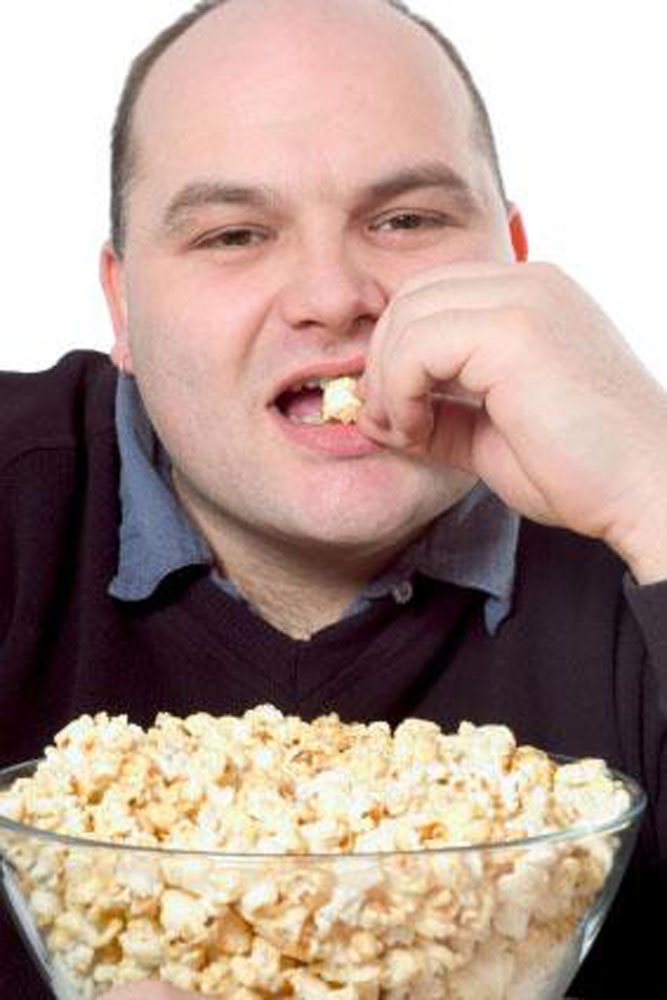I can’t stand it when someone behind me at a movie chews popcorn with his or her mouth open. I mean, I really can’t stand it.
I have misophonia, a condition with which certain sounds can drive someone into a burst of rage or disgust. Although only identified and named in the last 20 years, misophonia has been enthusiastically embraced, with websites, Facebook pages and conferences drawing small armies of frustrated visitors.
As a primary care physician, I find that misophonia can present some special challenges: At times, my patients can be the source of annoying sounds. At other times, the condition can be a source of special bonding if I realize that a patient is a fellow sufferer.
But some experts question whether misophonia really exists. By naming it, are we giving too much credence to a series of symptoms that are no big deal?
Coined by the married researchers Margaret and Pawel Jastreboff of Emory University in 2002, misophonia (“hatred of sound”) is sometimes referred to as selective sound sensitivity syndrome. Like me, those with the disorder identify a series of specific sounds that bother them. A 2013 study by Arjan Schröder and his colleagues at the University of Amsterdam identified the most common irritants as eating sounds, including lip smacking and swallowing; breathing sounds, such as nostril noises and sneezing; and hand sounds, such as typing and pen clicking.
The range of responses to these noises is broad, from irritation to disgust to anger. Some sufferers even respond with verbal or physical aggression to those making the noises. One woman reported wanting to strangle her boyfriend in response to his chewing.
Researchers are only beginning to understand the science behind misophonia, but early data suggest a hyperconnectivity between the auditory system and the limbic system, a part of the brain responsible for generating emotions. Some studies have found associations between misophonia and other psychiatric conditions, such as obsessive compulsive disorder and post-traumatic stress disorder, but many sufferers appear to have no other major emotional problems. Dr. Schröder and other researchers are developing specific diagnostic criteria.
Like most people with misophonia, I had symptoms long before I had heard of the condition. When I lived in New York City, I was much more sensitive than my roommates to noises from adjacent apartments. When dogs are left outside barking late at night, I fixate on the noise and cannot fall asleep. Chewing noises, particularly from behind me, are enormously irritating, as are people who perpetually sniff their mucus back into their nostrils rather than blowing their noses and ending the noise. Fortunately, I have not — at least so far — experienced nearly the rage of some of my fellow sufferers.
For me, one of the most frustrating aspects of misophonia is what I call the “incredulity factor.” For years, I could not believe that my friends and relatives were not getting as upset at what I considered rude behaviors. They were getting frustrated with me for focusing on sounds they did not really hear.
One of the advantages of defining misophonia is that it reminds those with the condition that only a small percentage of the population — no one knows the exact number — is affected. As one commentator wrote online, “I had to learn this is MY problem, not the problem of other people.”
Sometimes those people are my patients. For example, I recently saw a man whose sleep is interrupted nightly by what he believes is someone moving furniture in the apartment above his. He can rarely fall asleep again, in part because of his anger. In such cases, talking to my patients about misophonia can help them understand why they are so sensitive to the offending noise. The website misophonia.com offers a sample doctor letter that patients can bring to educate their health care professionals about the condition.
Truth be told, I also see patients who exacerbate my misophonia. Loud yawners are particular offenders. I have also seen patients whose saliva is audible every time they speak. During such encounters, I work to put aside my negative emotions and focus on the patient’s concerns, reminding myself that some of the sounds that irritate me are involuntary. I also remind myself that I am a professional whose primary responsibility is to the patient.
Indeed, this type of behavioral conditioning is one of the recommended approaches to dealing with misophonia. Using cognitive behavioral therapy, patients may learn how to distract themselves or substitute white noise or other sounds to avoid becoming angry at others. If there is an accompanying psychiatric disease, medications such as selective serotonin reuptake inhibitors may help. Removing oneself from the source of the noise can work, but is not always practical. Research into better treatments is continuing.
So, will misophonia exist decades from now? As knowledge of the brain improves, sensitivity to sounds may be included among other psychiatric or neurological conditions. But for now, the diagnosis remains a godsend to many.
“I can’t believe this! There are others!” one woman wrote in response to an online posting. Another commenter agreed. “I am so relieved,” she wrote, “to know I am not crazy.”
Originally published in the New York Times, February 24, 2015, page D4.
